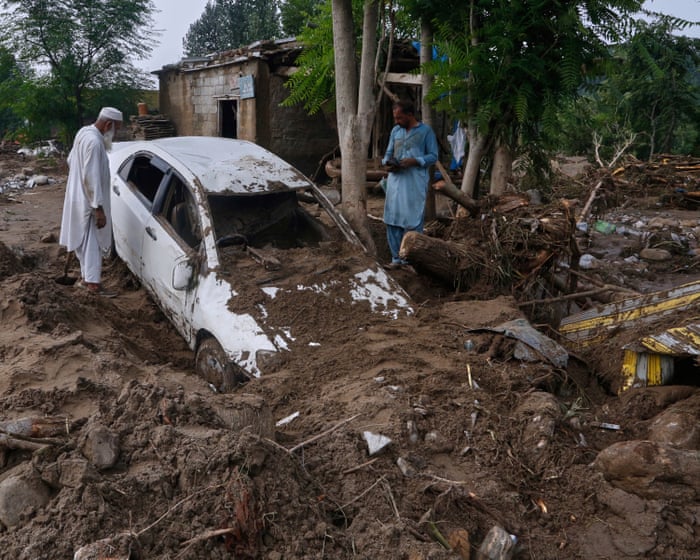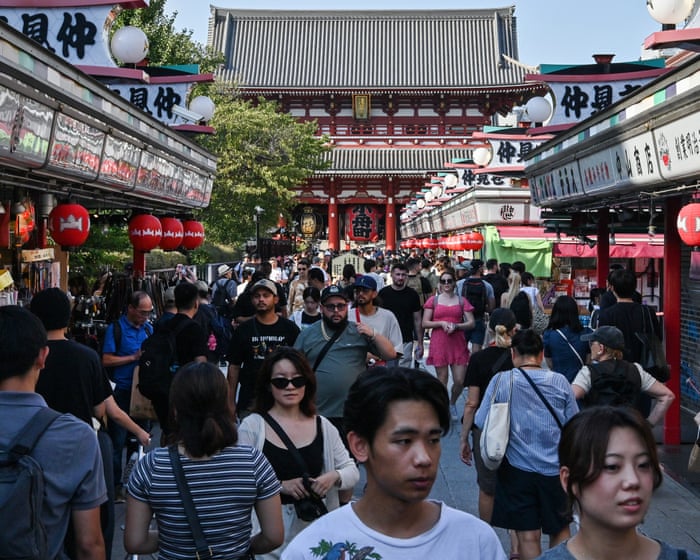At least 321 people have died in northern Pakistan over the past two days due to flash floods caused by heavy monsoon rains, the country’s disaster agency reported on Saturday.
Most of the fatalities—307—occurred in the mountainous Khyber Pakhtunkhwa province, with nine more deaths in Pakistan-administered Kashmir and five in the northern Gilgit-Baltistan region. The victims were mostly caught in flash floods or crushed by collapsing houses, while 21 others were injured.
Pakistan’s weather department has warned of more heavy rain in the northwest in the coming hours, advising residents to take precautions. The provincial government has declared several hard-hit districts—including Buner, Bajaur, Swat, Shangla, Mansehra, and Battagram—as disaster zones.
Meanwhile, rescue teams face major challenges. About 2,000 workers are searching for bodies in the rubble and providing relief across nine affected districts.
“Heavy rain, landslides, and damaged roads are making it extremely difficult to deliver aid, especially heavy equipment and ambulances,” said Bilal Ahmed Faizi, a spokesperson for Khyber Pakhtunkhwa’s rescue agency. “With most roads blocked, teams are having to reach remote areas on foot.”
He added that while rescuers are trying to evacuate survivors, many refuse to leave because they’ve lost family members or are still searching for loved ones trapped in the debris.
(Photo caption: A resident wades through floodwaters in Mingora, the main town of Swat Valley.)
FAQS
### **FAQs About the Monsoon Floods in Pakistan**
#### **Basic Questions**
1. **How many people have died in the Pakistan floods so far?**
The death toll has climbed to over 320 due to monsoon-related flooding.
2. **What caused the floods in Pakistan?**
Heavy monsoon rains led to overflowing rivers, flash floods, and landslides.
3. **Which areas in Pakistan are most affected?**
The worst-hit regions include parts of Punjab, Sindh, Balochistan, and Khyber Pakhtunkhwa.
4. **Are the floods still ongoing?**
Yes, some areas continue to experience flooding as rains persist and rescue efforts are underway.
5. **How is the government responding?**
Authorities are conducting rescue operations, setting up relief camps, and providing aid to affected families.
—
#### **Intermediate Questions**
6. **How do monsoon floods compare to previous years?**
This year’s floods are among the deadliest in recent years, with higher rainfall and more widespread damage.
7. **What are the main challenges in rescue efforts?**
Damaged infrastructure, blocked roads, and limited access to remote areas make rescue operations difficult.
8. **Are international organizations helping?**
Yes, groups like the UN, Red Cross, and other NGOs are providing emergency aid and support.
9. **What diseases are a concern after floods?**
Waterborne diseases like cholera, diarrhea, and malaria are major risks due to contaminated water.
10. **How can people donate or help flood victims?**
Reputable charities like Edhi Foundation, Red Crescent, and UN agencies accept donations for relief efforts.
—
#### **Advanced Questions**
11. **How does climate change affect monsoon flooding in Pakistan?**
Climate change increases rainfall intensity and unpredictability, making floods more severe and frequent.
12. **What long-term solutions can prevent future flood disasters?**
Better drainage systems, early warning systems, and climate-resilient infrastructure are needed.
13. **How does flooding impact Pakistan’s economy?**
Floods destroy crops, homes, and infrastructure, leading to economic losses and food shortages.
14. **Are there any missing persons reported?**
Yes, some people remain missing,




